What is a brain aneurysm?
A brain aneurysm is a bulging, weak area in the wall of an artery that supplies blood to the brain.
In rare cases, the brain aneurysm ruptures, releasing blood into the skull and causing a blood clot in the brain . Depending on the severity of the hemorrhage, brain damage or death may result.
The most common location for brain aneurysms is in the network of blood vessels at the base of the brain called the circle of Willis.
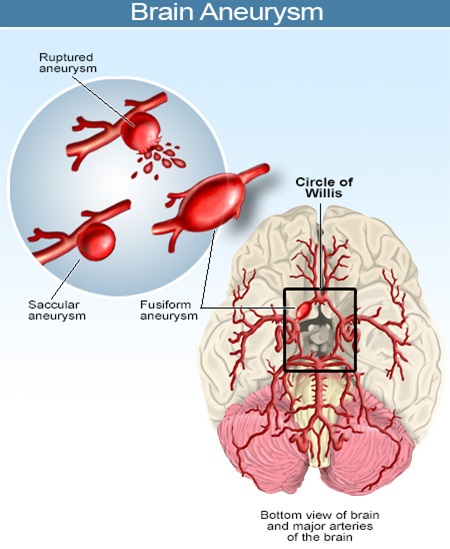 |
| ‘Picture 1: Aneurysm and location of brain aneurysm Source: MedicineNet.com |
What causes a brain aneurysm?
A person may inherit the tendency to form aneurysms, or aneurysms may develop because of hardening of the arteries (atherosclerosis) and aging.
The following risk factors may increase your risk for an aneurysm:
- Family history. People who have a family history of brain aneurysms are more likely to have an aneurysm than those who don’t.
- Previous aneurysm. People who have had a brain aneurysm are more likely to have another.
- Gender. Women are more likely to develop a brain aneurysm or to suffer a subarachnoid hemorrhage.
- High blood pressure. The risk of subarachnoid hemorrhage is greater in people who have a history of high blood pressure.
- Smoking. The use of cigarettes may greatly increase the chances of a brain aneurysm rupturing.
What are the symptoms?
Most brain aneurysms cause no symptoms and may only be incidentally detected.
Symptoms usually arise after it rupture causing bleeding inside the brain (hemorrhogic stroke). The symptoms are:
- A sudden, severe headache that is different from past headaches.
- weakness or paralysis of an arm or leg
- trouble speaking or understanding language
- Severe neck pain.
- Persistent nausea and vomiting.
- Sensitivity to light.
- Fainting or loss of consciousness.
- Seizures.
Once an aneurysm bleeds, the chance of death is 30 to 40 percent and the chance of moderate to severe brain damage is 20 to 35 percent, even if the aneurysm is treated. Fifteen to 30 percent of patients have only mild difficulties or almost none. If the aneurysm isn’t treated quickly enough, another bleed may occur from the already ruptured aneurysm.
What are the symptoms of an unruptured aneurysm?
Smaller aneurysms usually don’t have symptoms. But as an aneurysm enlarges, it can potentiality causing symptoms by pressing on certain areas in the brain. The symptoms is depending on what areas of the brain are affected and how bad the aneurysm is. When this happens, the person may suffer from severe headaches, blurred vision, changes in speech, neck pain, numbness or weakness of an arm or leg, and seizures.
What are the chances that an unruptured aneurysm may bleed?
Many factors determine whether an aneurysm is likely to bleed. These include the size, shape and location of the aneurysm and symptoms that it causes. Smaller aneurysms that are uniform in size may be less likely to bleed than larger, irregularly shaped ones. That’s why treatment should be started as soon as possible.
What causes an aneurysm to bleed?
The exact cause were unknown but several factor has been identified for higher risk of bleeding:
- High blood pressure is the leading cause of subarachnoid hemorrhage. Heavy lifting or straining can cause pressure to rise in the brain and may lead to an aneurysm rupture.
- Strong emotions, such as being upset or angry, can raise blood pressure and can subsequently cause aneurysms to rupture.
- Blood “thinners” (such as warfarin), some medications and prescription drugs (including diet pills that act as stimulants such as ephedrine and amphetamines), and harmful drugs like cocaine can cause aneurysms to rupture and bleed.
How are cerebral aneurysms diagnosed?
- Angiography is a dye test used to analyze the arteries or veins. An intracerebral angiogram can detect aneurysm and the degree of narrowing or obstruction of an artery or blood vessel in the brain.
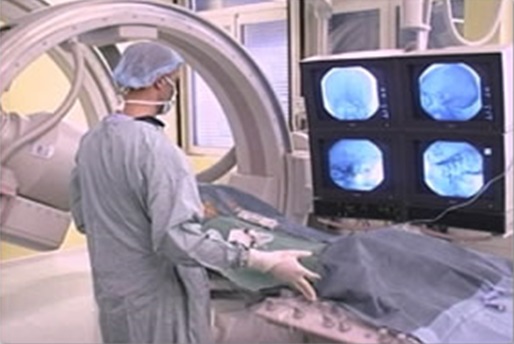 |
| Source: Society of NeuroInterventional Surgery (SNIS) |
- Computed tomography (CT) of the head is a fast, painless, noninvasive diagnostic tool that can reveal the presence of a cerebral aneurysm and determine, for those aneurysms that have burst. Occasionally a contrast dye is injected into the bloodstream prior to scanning. This process, called CT angiography, produces sharper, more detailed images of blood flow in the brain arteries.
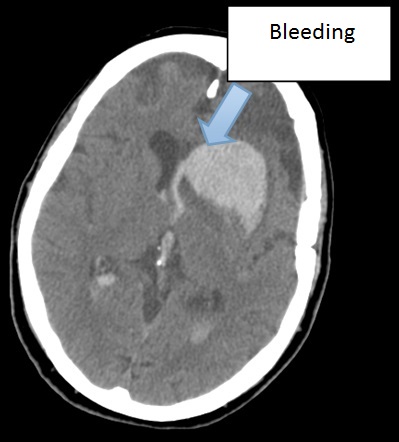 |
| Brian CT scan showed bleeding caused by the ruptured aneurysm Source: Radiopedia |
- Magnetic Resonance Imaging (MRI) uses computer-generated radio waves and a powerful magnetic field to produce detailed images of the brain. Magnetic Resonance Angiography (MRA) produces more detailed images of blood vessels. The images may be seen as either three-dimensional pictures or two-dimensional cross-slices of the brain and vessels.
 |
| MRI brain showed cerebral arteries Source: wikipedia.org |
- Cerebrospinal fluid analysis may be ordered if a ruptured aneurysm is suspected (subarachnoid hemorrhage) but not detected on the CT scan. The sample of Cerebrospinal fluid will be examined in the laboratory to look for presence of blood or blood product.
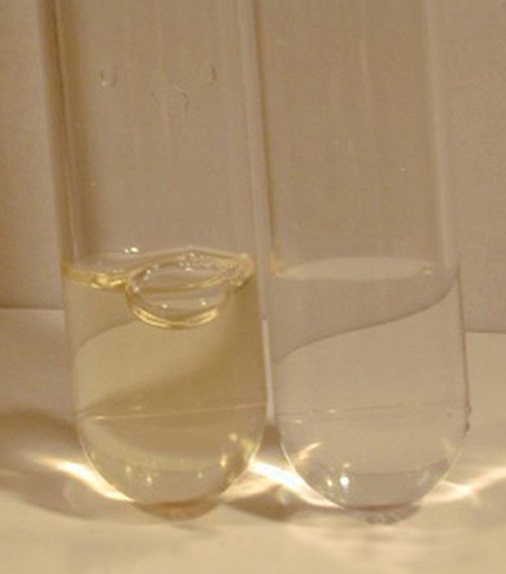 |
| The left test bottle showed presence of blood product in the Cerebrospinal fluid as compared to the normal on the right side Source: webmd.com |
What treatments are available?
The ultimate goal of brain aneurysm treatment is to prevent any future bleeding while preserving the artery from which the aneurysm originates.
Currently, there are two major treatments:
Surgery
The placement of a metal clip across the base of the expanded, balloon-like aneurysm is the most definitive treatment, and the success rate is excellent. Over the last 20 years, surgical techniques for repairing brain aneurysms have improved tremendously, and “microsurgical clipping” can be carried out with very little risk.
Endovascular Therapy
Endovascular treatment of brain aneurysms is an alternative to microsurgical clipping.
Cerebral angiogram will be performed first and special coils are delivered to the aneurysmal sac. This coils block off the ballooned part of the artery and cause the aneurysms to clot and solidify, preventing further bleeding
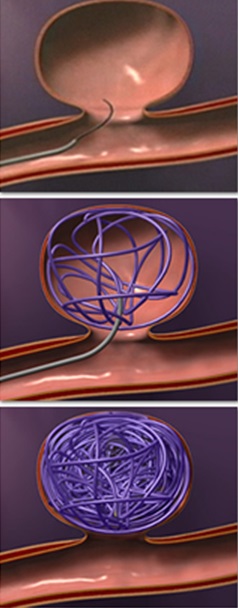 |
| Endovascular coiling treatment Source: Society of NeuroInterventional Surgery (SNIS) |
What is the prognosis?
An unruptured aneurysm may go unnoticed throughout a person’s lifetime.
It is estimated that about 40 percent of individuals whose aneurysm has ruptured do not survive the first 24 hours; up to another 25 percent die from complications within 6 months.
Individuals who receive treatment for an unruptured aneurysm generally require less rehabilitative therapy and recover more quickly than persons whose aneurysm has burst. Recovery from treatment or rupture may take weeks to months.
References
- Society of NeuroInterventional Surgery (SNIS)
- MedicineNet.com
- The aneurysm and brain foundation
| Last Reviewed | : | 13 November 2015 |
| Writer | : | Dr. Ahmad Shahir b. Mawardi |
| Accreditor | : | Dato’ Dr. Md Hanip b. Rafia |







